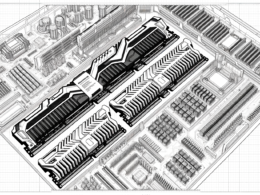Scientists from Tsinghua University and the Harvard-China Project on Energy, Economy, and Environment have conducted a detailed life cycle analysis of jet fuel produced from solid waste. According to their calculations, this approach allows an 80–90% reduction in greenhouse gas emissions compared to traditional aviation kerosene. A key technical limitation remains the scaling of gasification plants to the levels necessary for the global market.
Solid waste is typically directed to landfills or incineration plants, both of which occupy land and may exacerbate air pollution. The authors have demonstrated that using this waste stream for liquid fuel production simultaneously alleviates pressure on landfills, reduces total emissions, and assists cities in moving toward their waste reduction goals. The analysis rests on real data regarding gasification technology followed by hydrocarbon synthesis.
Researchers closely examined emission sources at all stages-from waste collection and sorting to the final fuel-and identified the process’s weak point: only about 33% of the initial carbon from the waste transitions into finished fuel due to the suboptimal composition of the resulting gas for synthesis conditions. The model indicates that efficiency can be improved through carbon dioxide capture and/or the addition of “green” hydrogen produced from renewable energy, which increases fuel output and reduces specific emissions.

The authors considered various scenarios, estimating the amount of jet fuel that could be produced from the available volume of municipal waste. In the most realistic scenario, global municipal solid waste enables the production of about 50 million tons of aviation fuel per year. According to their calculations, this results in a sector emission reduction of around 16%, given an efficient waste management system and the optimized production cycle.
A separate scenario accounts for the integration of “green” hydrogen into the technology chain. In this case, potential production rises to approximately 80 million tons of fuel annually, which, according to the authors, can cover up to 28% of global jet fuel demand and cut emissions by up to 270 million tons of CO2 each year. For comparison, this is akin to the annual emissions of a large industrial mid-level country. Crucially, the proposed capacities remain within existing sustainable criteria for aviation fuel.
The study directly relates to existing international goals. In the United States, the aim is to reach sustainable aviation fuel production of 35 billion gallons (approximately 132.5 billion liters) per year by 2050 with financial incentives support. In the European Union, requirements are set to gradually increase the share of sustainable fuel in aircraft tanks departing EU airports: from 2% in 2025 to 70% by 2050.
Globally, the International Civil Aviation Organization’s (ICAO) CORSIA program requires airlines to offset emissions growth by either purchasing approved carbon credits or using sustainable aviation fuel. The calculations in the new article show that under such mechanisms, the price of fuel from municipal waste can be competitive and even advantageous for airlines.
Currently, the share of sustainable aviation fuel remains below 1% of global jet fuel consumption, mainly due to high production costs and limited access to existing raw materials-from used cooking oil to agricultural crops.







